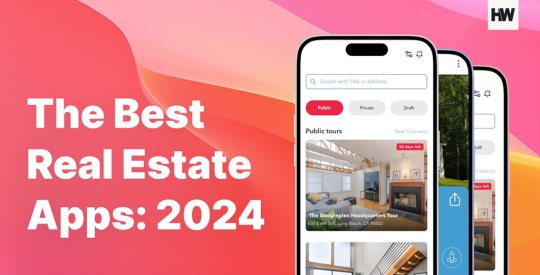
Imagine requesting an Uber and not being able to see a map view of where the driver is located in real time; ordering food from DoorDash without up-to-date digital menus from an endless number of restaurants; or buying an item with Amazon Prime and having to pay close attention to the delivery estimates. When we look at industries that have undergone significant change, it is easy to take for granted the success stories of market leaders and miss the seemingly small inventions that radically changed consumer expectations and behaviors. Each of these companies – Uber, Doordash, and Amazon – have completely transformed their respective industries. But those changes didn’t happen overnight. In fact, each company started by mastering something small and built upon it to deliver unprecedented value for consumers. What does this mean for real estate?
Consumer expectations are formed by their last best experience. In real estate, however, the majority of transactions still happen the exact same way that they did in the 90s. The industry has made strides to increase access to listings, share pricing insights, and streamline offers, but has yet to offer the high-bar experience that consumers expect.
What disruptive companies in other industries have demonstrated is that it’s the seemingly small things that most often turn into massive opportunities for change. As we continue the path toward a more automated future, we should draw lessons from other industries to pinpoint the small things that could drive significant positive impact for consumers.
How real estate can double down on accessibility
Amazon, “The Everything Store,” pioneered consumer e-commerce, placing almost any product one-click away from your doorstep in two days. More recently, Robinhood reimagined stock investing by removing commissions and leading with partial share ownership, making investing accessible to an entirely new generation of consumers. Can’t afford Berkshire Hathaway or Tesla stock? No problem, you can buy as many partial shares as you can afford. If you are a Charles Schawb or TD Ameritrade customer, you’ve benefited from changes catalyzed by Robinhood as commission rates have been cut to zero. What Amazon and Robinhood have in common is their ability to give consumers easy access to products or services that were previously more challenging to get. Now, all companies are forced to step up and serve consumers similarly or risk becoming obsolete.
While the real estate industry has brought a great deal of information online, we have a long way to go to realize accessibility at the level consumers have come to expect. Take inventory, for example. Homes are often off the market long before they’re removed from a search site. There’s no “out of stock” icon, leaving consumers disappointed or frustrated when they discover that a property has already been sold. At the same time, important information about the home-buying process is often only available through financial institutions. Ultimately, this lack of on-demand accessibility to inventory and information impedes trust in brokerages, agents, and the industry at large. We must look toward solutions that will provide homebuyers and sellers with the information they need to make confident decisions.
Make home shopping as intuitive as exploring new media content
In recent years, and especially in recent months, we’ve all succumbed to Netflix bingeing. From an abundance of options to personalized recommendations, Netflix has met every possible consumer need. Gone are the days of driving to the video store for a 24-hour rental period. Same goes for Spotify. The company democratized music in a way that mimicked what people loved most about owning music: a personal playlist. Spotify modernized the playlist by enabling consumers to control their music from any device, at any time, and paved the way for organic discovery, serving up new music based on consumer behaviors and preferences. Both of these powerhouse companies have mastered the art of convenience, giving consumers exactly what they want—when they want it and where they want it.
With true convenience, products and services come to you. This can be hard to do in real estate when buying a home requires far more nuanced preferences. At the same time, it is imperative that we strive to understand individual homebuyer and seller preferences in the same way that streaming platforms understand us. Right now, the onus is on consumers as they sift through mountains of information and navigate much of the home journey on their own. We need to take on that burden for consumers, serving up information at just the right time and enabling serendipitous discovery.
Build transparency into your business model
Companies that stand out in a crowded landscape provide visibility into every step of their respective processes and serve up information consumers don’t even know they need—whether in buying something as simple as a pizza or as significant as a car. Consider Domino’s Pizza Tracker, which provides consumers with every detail about their order, from prep, to time in the oven, to delivery.
By offering this transparency into a commodity that doesn’t even need it, Domino’s has raised the bar for every other company. Similarly, Carvana, the pioneer of digital car buying, brings forward information about every car option so consumers have insight into details that are often hidden within a dealership, Carfax report, or through brand-specific inspection programs. Each company has created a trust-centered experience by equipping consumers with comprehensive information, democratizing knowledge, and unlocking better decision-making.
Buying or selling a home is one of the most high-stakes decisions we make in a lifetime. Consumers need visibility into how the process works and where their money is going. They may want to know how other properties are priced in the area, information about a given neighborhood, or how their asset will appreciate value over time — easily digestible information that indicates why the investment is the right choice for them.
Some critical information is available on current platforms, but the industry can do better. We need to bring information that is traditionally hard to access – financing options, credit requirements, and property details — to the forefront of the consumer experience, making information easy to action, and build this practice into business from the ground up.
We hear a lot of talk about digital disruption these days, sweeping across industries in leaps and bounds. It’s no secret that digital advances have quickly become a competitive differentiator—and it’s become abundantly clear that real estate is reaching an inflection point, where those that embrace change will surge ahead, while those that remain ingrained in legacy systems will fall far behind. Access, convenience, transparency, and extension are the small things that will give consumers the control and trust they’ve come to expect from other industries, while building towards massive change for real estate at large.
To read the full March issue of HousingWire Magazine, click here.






